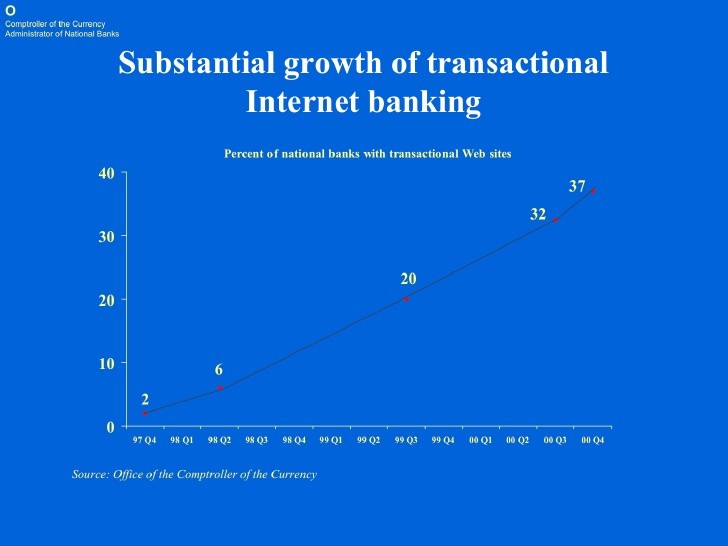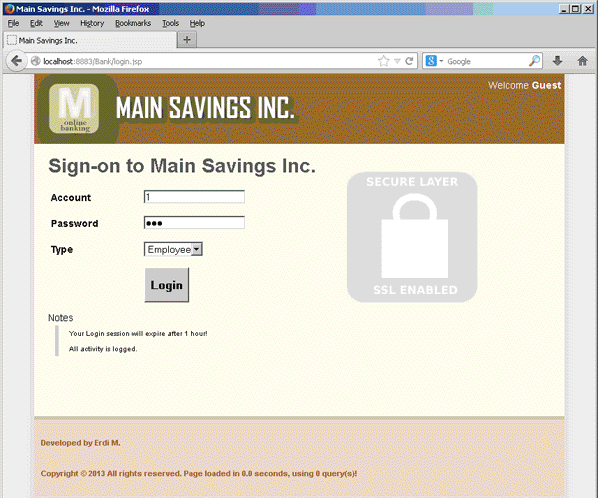EBank or BrickandMortar Bank
Post on: 16 Март, 2015 No Comment

There seems to be a traditional brick-and-mortar bank on every corner of most cities, but also growing are the ranks of ebanks. which provide all their services online. The two types have many features in common, but there are a few distinctions that might make one category the better choice for you.
What to Look For
- Security Be sure that deposits in any bank you choose are FDIC insured. This means the Federal government promises that if your bank crashes you will not lose the money in your accounts, up to $250,000 (provided they are checking or savings accounts, not an investment account).
- Cost of banking Consider fees. interest rates and minimum-deposit requirements.Thanks to the internet, everyone has access to competitive banks that don’t charge fees. If you are already committed to a bank that does charge fees, call and ask that they be waived. Fees that can be avoided include ATM fees, costs of new checks, stop-payment fees, currency-exchange fees, minimum-deposit fees and annual fees. If that doesn’t work, be aware that banks often waive fees for customers who also have credit cards, mortgages or CDs at that bank, in addition to a checking account. If you have a mortgage, see if it pays to bank with the lender who holds it.
- Interest rates Some banks pay interest not only on savings accounts, but also on the money in your checking account .
- Resources beyond basic banking Will you need insurance, a credit card, a loan or a mortgage? Banks vary in the services they offer; choose one that meets your variety of needs.
- Convenience Both ebanks and brick-and-mortar banks have embraced technology to allow customers easier access to banking services. Most banks provide apps that allow on-the-go banking. but some may be better suited to your needs (or your smart phone) than others. Both ebank Charles Schwab and brick-and-mortar bank Wells Fargo let you use your mobile phone for depositing checks with a smart-phone camera, monitoring accounts, transferring money and paying bills. Charles Schwab’s app allows you to monitor and manage your investments, while Wells Fargo lets you transfer money to other Wells Fargo account holders with just an email or phone number.

Brick-and-Mortar Benefits
- Human contact. Person-to-person customer service may help you express concerns and talk through big financial decisions better than calling or messaging an online representative.
- ATMs Big banks seem to have an ATM on every other corner of most cities.
- Services provided: brick-and-mortar banks may offer a larger suite of services – such as credit cards, loans and mortgages – that an ebank might not offer. Being a long-term bank customer may be an advantage when you are looking for a loan. And if you prefer/need to deposit paper checks with a teller, you have a place to do it.
- Additional services: brick-and-mortar banks can help with services such as notarizing forms, currency exchange, quarters for the laundry machine or crisp new bills for holiday tips. Banks will often only provide these services for account holders, so having an account at a brick-and-mortar bank can come in handy.
eBank Benefits
- Convenience Online banks provide 24-hour access to your accounts and to customer service.
- Easy monitoring Having access to all of your banking online means that you can view your financial status within minutes, from the comfort of your home. eBanks also make it easy to get to your banking history and past statement – no digging through your file cabinet to make sure you deposited a check three months ago.
- Fast turnaround You can deposit checks, pay bills, transfer money or have your bank write checks for you, all with a few easy clicks.
- Lower overhead Because ebanks don’t have to pay for as much physical space – they do have offices, but not multiple branches for consumers – they often have lower fees than traditional brick-and-mortar banks.
The Bottom Line
When choosing a bank, think about the resources and services you need today and those you will want in the next few years. You might even consider opening an account at each type of bank – one for the majority of your day-to-day banking needs and another to grant you access to other banking resources as you need them. It takes some time and research (one good website is findabetterbank.com ), but with today’s technology and banking resources,you should be able to find a bank that works for your needs.














